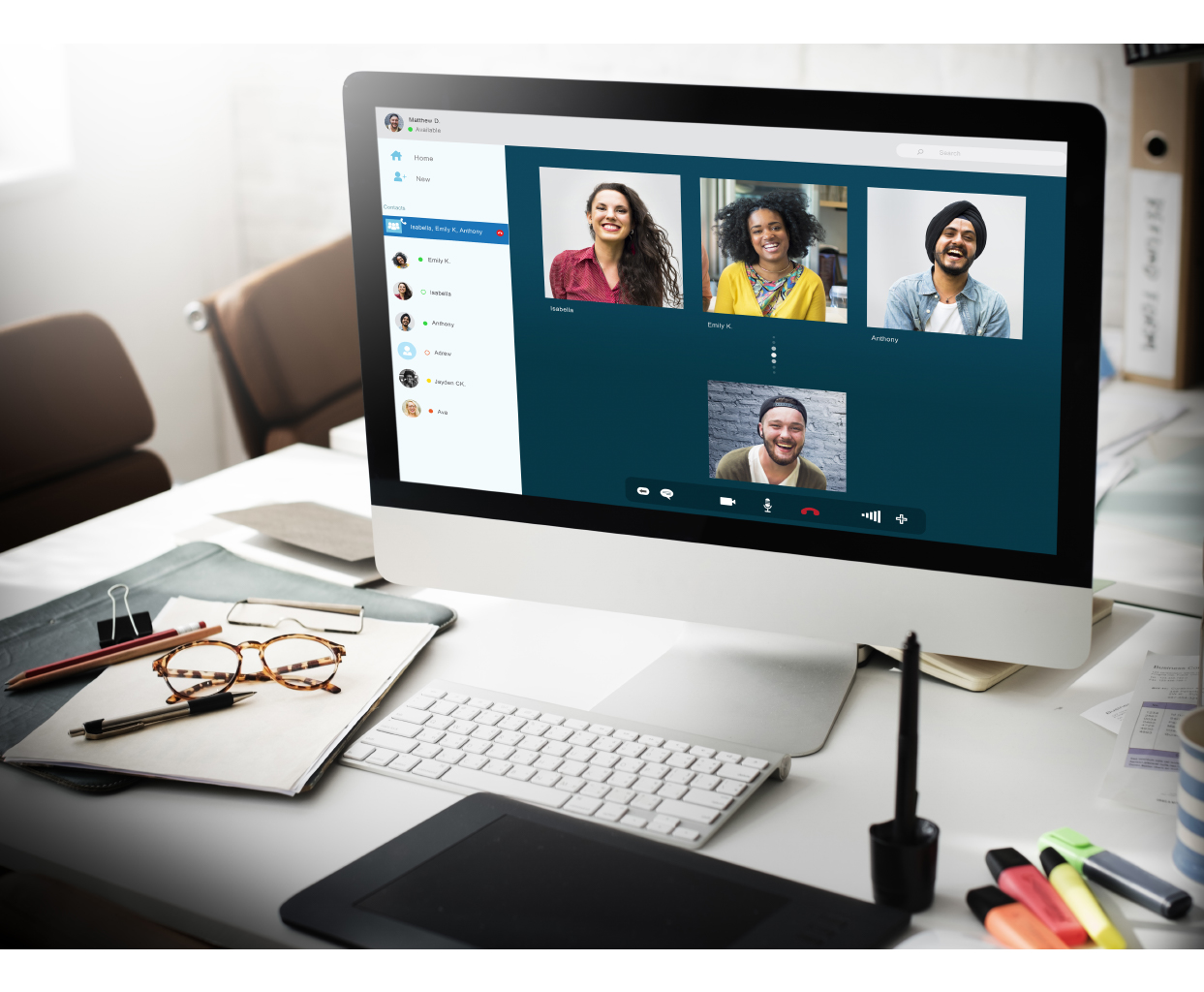Workplace giving is the starting point for building a generous, positive work environment. When you implement a comprehensive giving program, employees will naturally want to participate. Creating or revamping a program is only half the battle. As the excitement of a new program wears off (which it typically does), you might see a decrease in employee participation.
That’s why you need to take a hands-on approach when promoting your program to employees and nonprofits alike. To continuously encourage workplace giving, try these best practices:
- Enable multiple giving options.
- Develop relationships with local nonprofits.
- Educate your employees with the best giving practices.
- Take action based on employee feedback.
Corporate social responsibility is on the rise, so if you’re not already taking advantage of philanthropic programs, your employees probably aren’t as motivated as they could be.
If you’re ready to get your employees more involved in your corporate giving program, let’s dive in!
1. Enable multiple giving options.
By only implementing one type of giving program, you’re limiting your employees’ generous efforts. The world of philanthropy is seemingly endless, so your efforts should reflect this. Plus, you’ll attract more generous prospective employees with your endless giving options.
For instance, companies typically implement these programs:
- Matching gifts. The most common way businesses support their employees’ generosity is through matching gifts (learn more here). Through these programs, a company offers to match its employees’ donations, doubling their contributions! Better yet, some businesses even offer to match the amounts employees fundraise on behalf of an organization (i.e. peer-to-peer fundraising).
- Volunteer grants. Employees who don’t have the capacity to give but have a strong passion for giving typically turn to volunteerism. As a way to support your employees’ efforts, offer volunteer grants. When an employee reaches a certain level of involvement with a nonprofit through volunteerism, a company with a volunteer grant program will donate a certain amount to the organization.
- Cause cards. Another common giving program is cause cards. Similar to gift cards, these are funds businesses give to employees to donate to an eligible charity. Nonprofit eligibility is based on company guidelines. Typically, employees have to fulfill a certain requirement in order to receive a cause card. For instance, a company may require its employees to participate in its annual giving campaign.
There are a number of other ways to give back to the community. Choosing the best programs means analyzing your company’s views and determining how those align with your employees’ views.
If you want to develop your giving program even further, don’t limit it to just employees. Expand to their dependents, like their spouses and children, or expand to your customers with customer-giving campaigns.
Whichever giving programs you choose to implement, make sure they’re designed to develop deeper relationships with your employees, customers, and any other major parties.
2. Develop relationships with local nonprofits.
Developing relationships within your company is only half the equation. To make the most of your program, you’ll need to conduct outreach to local nonprofits.
Outreach doesn’t stop with the initial interaction. Rather, you’ll need to stay in contact with organizations throughout the year. For starters, look into the following options:
- It’s never too late to form relationships with your local nonprofits. A sponsorship is when you financially support an organization. This could mean providing funds to the nonprofit as a whole or funding a particular event it’s hosting. Typically, these are for promotional purposes but can help develop strong relationships with causes your company cares about. Check out OneCause’s guide to corporate sponsorships!
- More often than not, sponsorships and partnerships are misinterpreted as being the same. However, partnerships don’t include monetary support. For instance, when you encourage employees to volunteer and support a nonprofit, this may be classified as a partnership.
The best time of year to actively promote employee giving is during Giving Season. If you’re not already aware, Giving Season takes place during the holiday season at the end of the year. This is when employees are most aware of their finances and how much they can give. Plus, people are filled with the holiday spirit and feel extra generous!
To rapidly enhance your relationships with nonprofits, actively encourage your employees to give more to these organizations during this time of year. Well-run organizations gather their donors’ employer information, so they will recognize the efforts your company is making.
Make sure to continue developing these relationships year-round. Specifically, take the Giving Season approach when supporting your nonprofit partners’ large campaigns. Also, remember to take your nonprofit partners’ needs into account.
When it comes to forming relationships with nonprofits, businesses can majorly benefit as well. In fact, they may see a boost in:
- Sales.
- Employee satisfaction.
- Brand recognition.
However, don’t reach out to just whatever organizations will respond to you. It should go without saying that you should pick organizations whose missions align with your cause. A great place to start is by inquiring employees about which nonprofits that they support the most.
3. Educate your employees with the best giving practices.
Chances are, your employees want to give back to their communities, but other than the occasional donation, they don’t know how to give back. However, this is not entirely out of your control!
By intervening and educating employees on the best giving practices, you provide them with every tool they need to be well-rounded, philanthropic individuals. When done properly, you should see a boost in employee giving. Promote workplace giving with these best practices:
- Employees should start by supporting the causes they care about. To encourage that, your company should offer matching gifts and volunteer grants. Specifically, you shouldn’t restrict access to only nonprofits the company prefers. Rather, you should find common ground between the company’s views and employees’ views.
- Peer-to-peer fundraising can bring a competitive element to the giving game. Peer pressure isn’t so bad when it comes to supporting worthy causes. Peer-to-peer fundraising represents a great opportunity to promote charitable giving by pitting employees against one another to see who can raise the most money. However, you’ll need to rely heavily on your employees to spread the word. If you’re not aware of this type of campaign, visit Double the Donation’s peer-to-peer fundraising guide.
- When employees can’t donate money, they should donate their time. Even if a donor has a strong passion to give, they might not have the capacity to give. There’s never just one option for serving worthy causes. Instead of giving up, employees should turn to volunteerism. Companies can support volunteerism by offering forms of giving that don’t rely on monetary donations. Examples of this include volunteer grants and cause cards.
There are a number of best practices for employees, including maintaining accurate donation records, making long term commitments to select organizations, and being proactive in giving.
Remember, employees should be aware of their impact, especially during large giving campaigns, so make sure they know these tips to best represent nonprofits.
Instead of taking a backseat perspective, companies should actively promote these best employee giving practices. Your best chance is to create some sort of tangible copy (e.g. pamphlet, email, or website page), instead of relying solely on word-of-mouth promotion.
4. Take action based on employee feedback.
How can you expect to create the best corporate giving program when you don’t consider employees’ suggestions and preferences? You can’t.
Gathering employee feedback is vital to the success of your program. It can be anything from creating a suggestion box to analyzing data on program usage. Here are a few common ways to gather employee feedback:
- Suggestion box. Anonymous suggestions allow employees to give their honest feedback.
- Voting. When voting, employees can either indicate the nonprofits or causes they support or indicate the types of giving programs they’d like to see.
- Surveys. Surveys regarding improvements and general opinions can be created online. They’re easy to distribute to employees, and the results are easy to organize, too!
- Reporting tools. If you have a huge employee base, reporting tools may be the way to go. Depending on the tools, you can analyze program usage, such as match request amounts and frequency.
While this data can give you powerful insight into your program, it’s useless if you don’t take action based on the results.
Whatever route you take, ensure that you organize your data in a structured way. That way, you can quickly read the data, analyze it, and draw conclusions for making changes.
When possible, support the causes they care about that still align with company views. Also, consider the ways they like to give when designing or revamping your program. By listening to employees and taking action based on their suggestions, you tell them that their voice matters, motivating them to participate in workplace giving.
As you’ve learned, it’s not enough just to put a program in place that company management prefers. While it starts with a thoughtful design (e.g. multiple giving options), developing it takes time.
A positive, engaging giving program is one that takes employee feedback into consideration. From there, form relationships with nonprofits that both management and employees care about and actively promote their efforts such as major giving campaigns.
Take these tips into consideration, and you should see a boost in workplace giving participation. Don’t wait; start giving back to your community now!
Adam Weinger is the President of Double the Donation, the leading provider of tools to nonprofits to help them raise more money from corporate matching gift and volunteer grant programs.







